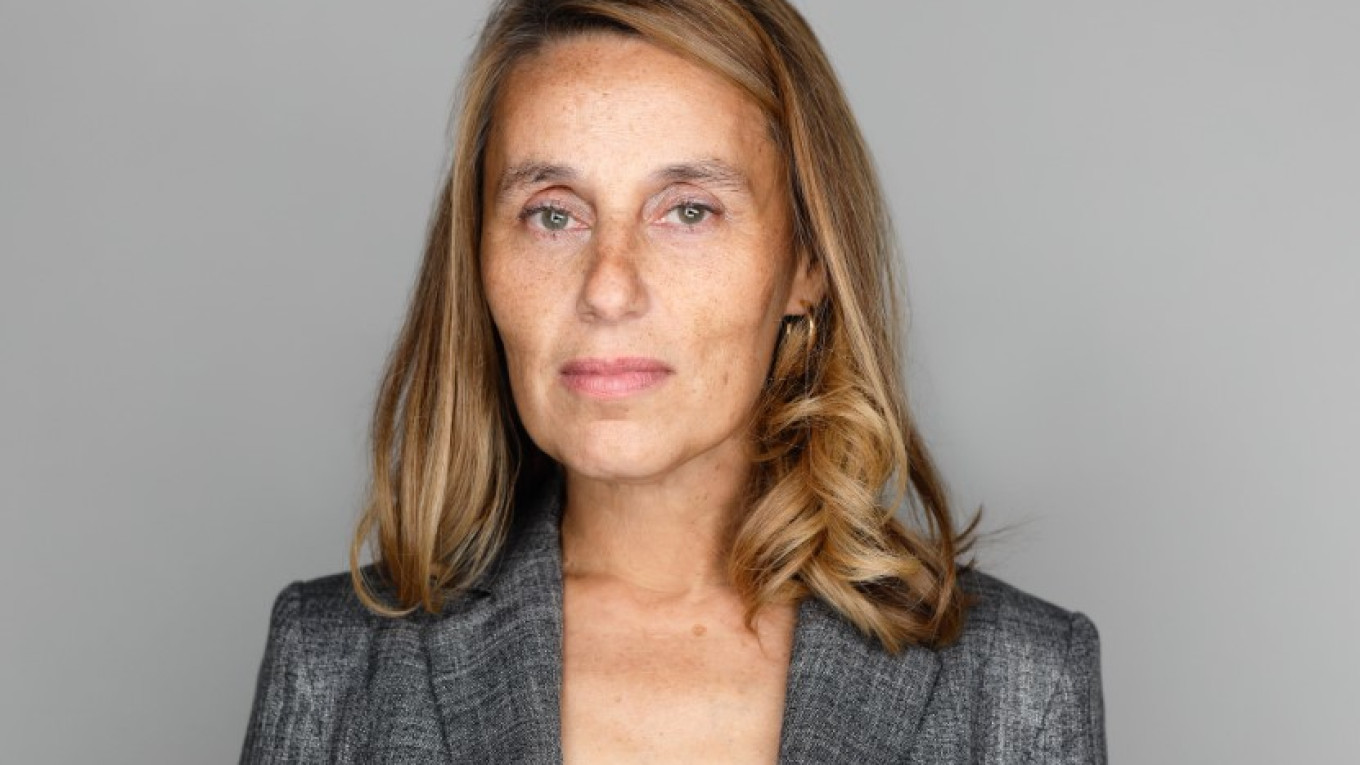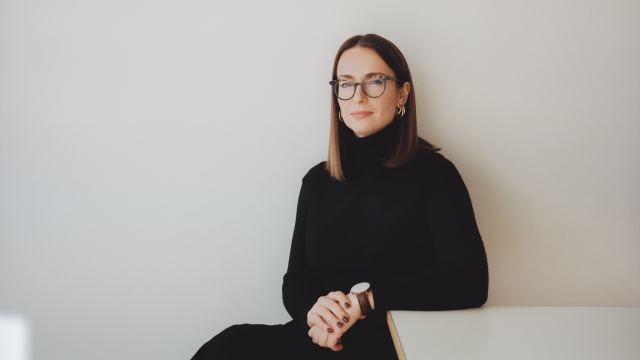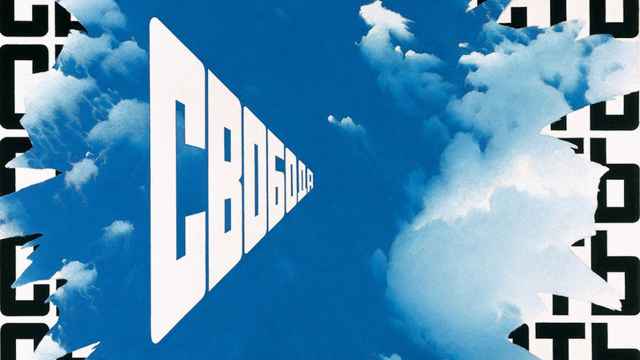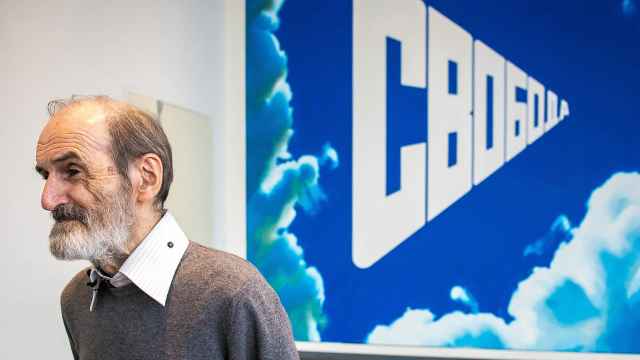“If there is no God, everything is permitted,” wrote Dostoyevsky. “The Baton and The Cross: Russia’s Church from Pagans to Putin,” the first book by former Moscow correspondent Lucy Ash, explores the provocative counterargument: If there is a God, everything is permitted — at least sometimes in the Russian Orthodox Church (ROC) throughout its thousand-year history.
Ash has divided the book simply into “Past” and “Present," in which she weaves stories from her many years in Russia and Ukraine to bring context to historical events. Some periods of history, however, defy context. For example, before the Viking princess Olga found God, she was better known for her revenge on the tribe who killed her husband: she invited them to a mead-soaked banquet before slitting their throats and burning down their homes by using pigeons that had flammable rags attached to their legs.
Olga’s grandson was Volodymyr of Kyiv, who brought Christianity to the Rus in 988. This event is often abused in interviews by Putin, who still seems angry that the historic birthplace of Orthodoxy now lies within another sovereign country — Ukraine.
This is not a comprehensive history of Orthodoxy in Russia. Ash tells us of the feared bodyguards of Ivan the Terrible, the struggle between the Slavophiles and Westernizers, and the excommunication of Tolstoy. But she doesn’t delve into how Orthodoxy triumphed over other religions vying for royal and public favor, and nor does she explore at length Orthodox anti-Semitism and pogroms.
Ash takes care to show both sides of the abusive relationship between church and state. Throughout Russia’s history, leaders have always used faith as a stick to beat the people; and yet the church has been beaten, too. During the godless Soviet years, few leaders had more priests killed than former seminarian Joseph Stalin.
“In 1937,” Stalin said, “the word God will disappear from the Russian vocabulary.” And yet after unceremoniously switching sides in the Second World War, Stalin found he needed the Church to defeat the Germans. He even allowed favored priest Sergius to fundraise via “a special account in the state bank to supply armored vehicles to the Red Army.”
Ash compares this about-face to the rehabilitation of the Russian Orthodox Church in the late Soviet period. She writes that the head of the KGB: “came to the same conclusion as Stalin: atheism could not be relied upon to install patriotism … Putin was of the same persuasion.”
So it came to be that the Romanov family — assassinated in the revolution and buried in an unmarked mass grave — became minor saints in Russia in the year 2000. They were perhaps only minor saints in Russia. But Ash takes a side trip to the U.S. Bible Belt, where a sect of American converts to Orthodoxy has started worshipping Tsar Nicholas II.
In the “Present” section Ash gives us an eviscerating portrait of Patriarch Kirill, the head of the Russian Orthodox Church. Like Putin, Kirill rose to power as a Westernizer “but will be remembered as an arch-reactionary.” He is clever and opportunistic. For example, in the 1990s, the Church become Russia’s largest importer of foreign cigarettes. Under Kirill, the Patriarchate received duty-free Winstons and Camels as “humanitarian aid,” making almost $476 million from their resale.
Ash is explicit about the Church’s links to the security forces. She considers Kirill and most of Russia’s top priests to be in the FSB’s pockets. In the Cold War some priests were agents in their own right. Ash goes further than some, drawing on conversations with historian Felix Corley to describe ROC priests in the diaspora combing the death registers of their new parishes to find identities for future spies.
Kirill remains one of the most zealous backers of Russia’s “Holy War” in Ukraine. Ash is generally sympathetic towards the squabbles of religious life, but here she is brutal: “There were disagreements in Orthodox circles…some [clerics] thought it was fine to bless machine guns, tanks, and submarines, but drew the line at weapons of mass destruction.”
She notes that Kirill is an extremist even by Christianity’s violent historic standards. Early Christian philosophers thought those who killed in wars should repent the blood they shed; Kirill’s talk of martyrs and the joyous afterlife comes closer to “Orthodox jihad.”
The chapter on war in Ukraine is thoughtful and well-observed. At least 39 priests from different churches across Ukraine have been killed or executed by Russia since February 2022 — and yet surprisingly few priests or worshippers have defected from the allegedly Moscow-backed Ukrainian Orthodox Church to the Orthodox Church of Ukraine. Ash shows us the dilemmas of ordinary people caught between two churches.
Despite the grim tales, it’s not an anti-religious work. Ash reserves her anger for the hypocrisy and corruption of the Orthodox hierarchy and the cowardice of career priests who ignore the needs of their flock.
There is a telling anecdote towards the end of the book about a band of former thieves led by Gerontiy Chudnevich, who turned their lives around by repairing churches in a remote Arctic settlement. Gerontiy and his amateur carpenters sound like something from the New Testament. But when Kirill arrived to consecrate one of the restored monasteries, he asked whether they were still on the premises. No, he was told. “Thank God for that!” he exclaimed.
Lively and empathetic in tone, this is a nonetheless a damning book. Ash shows us that Russia’s church has integrated itself with power at the price of its soul.
'The Baton and the Cross. Russia's Church From Pagans to Putin'
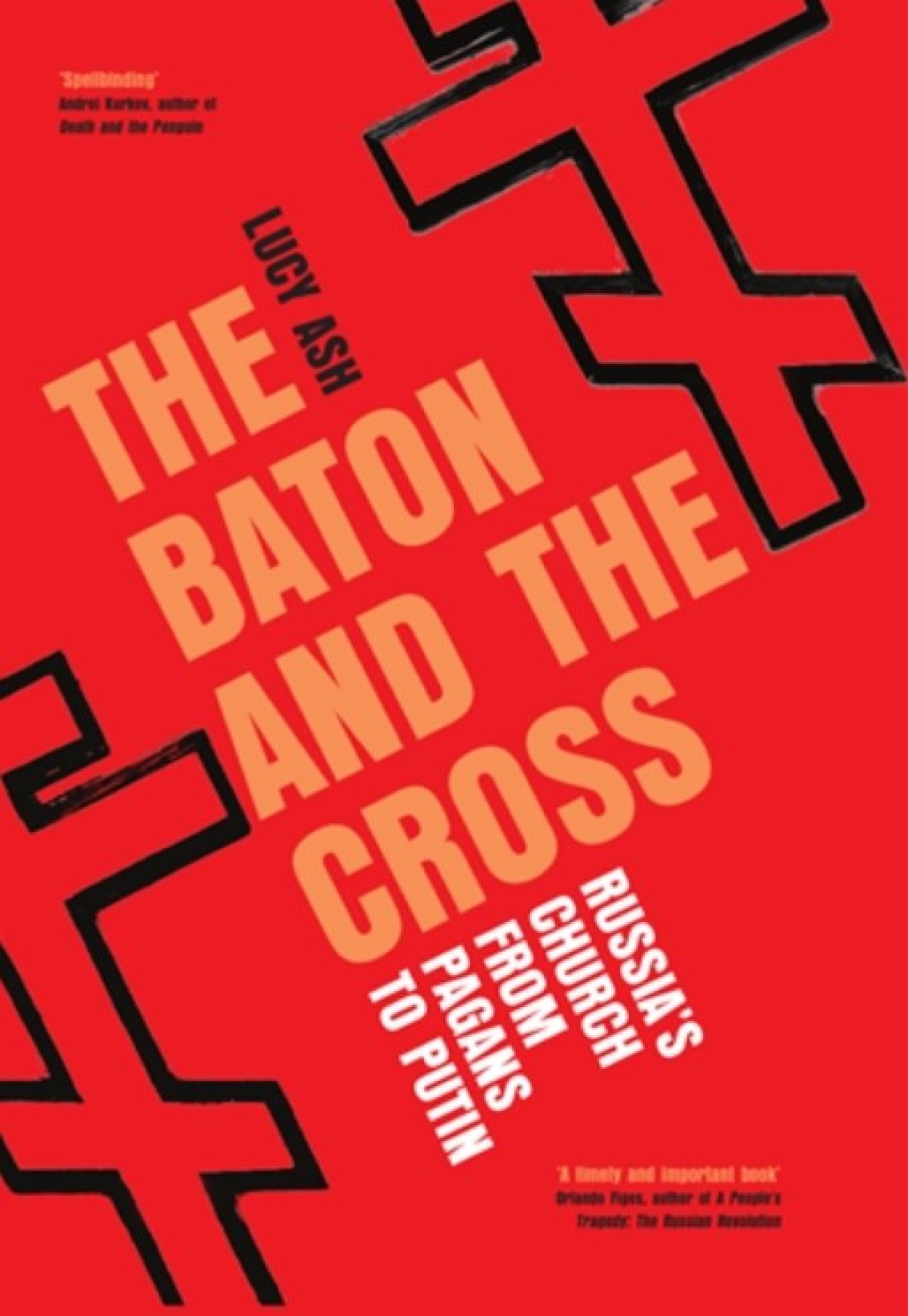
From Chapter 10: Kirill
Sister Vassa Larin, a Russian-American nun, grew up in a staunchly ROCOR [Russian Orthodox Church Outside Russia-ed.] family. Her father Georgiy was the Orthodox priest in Nyack, an enclave of exiled Russians on the banks of the Hudson River, just north of Manhattan. Christened Barbara, she and her older sisters were raised to speak Russian at home, English at school and to understand Slavonic in church. They wore long skirts and observed all the feasts and fasts of the Orthodox liturgical calendar. Her mother was very strict about behaviour in church. When she was too small to sing in the choir, Vassa had to stand for the entire liturgy facing the sanctuary. She was not allowed to turn her head to the back of the church to see if any school friends were there. The family would travel to Manhattan to picket the Russian Consulate, protesting against the treatment of dissidents in the USSR. A large portrait of Nicholas II hung in her parents’ house. She remembers how it made her ‘heart ache with sorrow’. At Orthodox summer camps in the Catskills, she and her sisters sang and marched to pro-monarchy songs. Echoing Count Uvarov’s slogan of the early nineteenth century, they were taught three cardinal values: Faith, Tsar and Fatherland.
There were virtually no canonical differences between the churches headquartered in Moscow and New York. They abided by the same liturgical rules, Old Church Slavonic language, Julian calendar, and the pantheon of saints. The ROCOR statutes declared that it would not reunite with Moscow until the fall of ‘the godless regime’. Even after the collapse of Communism, Vassa’s father opposed reunification. As far as he and his compatriots were concerned, the Red Church was morally bankrupt, as it had collaborated with the Soviet authorities and was ‘infested with KGB officers’.
The initial approaches from Moscow were spurned. Metropolitan Laurus, who headed the White Church, refused to meet Putin at a reception in the Russian Embassy in Washington in 2001. He also turned down an invitation to visit Russia. Two years later, though, Laurus had a change of heart, partly engineered by a German cleric. Archbishop Mark, born Michael Arndt, converted to Orthodoxy in his early twenties and later became metropolitan of Berlin and Germany. As early as the 1990s, he initiated dialogue between German dioceses of the ROCOR and the Moscow Patriarchate. By 2003 he was president of the commission on talks between the two churches. He was helped by a lay middleman.
Boris Jordan grew up in an observant Orthodox family on Long Island. His grandmother was a maid of honour to Empress Alexandra and his great uncle was Nicholas II’s physician. In 1992, after graduating from university, Jordan went to Moscow. In the early days of post-Soviet capitalism, he made a fortune privatising state assets. He also funded an academy for cadets where boys were meant to be educated along the tsarist principles of ‘national identity, orthodox faith, and discipline’. In April 2001, he took over NTV, the television channel, confiscated from another oligarch who was too independent. NTV had angered Putin with its lack of deference and no holds barred reports on the Second Chechen War.
Before long, the President had found another job for the young New Yorker. At a private meeting in 2001, Jordan said Putin had told him that he knew he was a religious person, before adding: ‘I believe that the reunion of the churches is a very, very important thing. One of the most important things you can do is to help in the reunification of the churches, much more so than anything you’re doing in television or business. This is probably the most important thing you can do in terms of your legacy.’
Jordan enlisted an acquaintance, Peter Holodny, another young investment banker who was also a priest. Holodny grew up in the parish of St Seraphim of Sarov on Manhattan’s Upper West Side and had talked of forging ties between the two churches. After the Revolution his grandfather, Alexander Kiselev, fled to Estonia where he served as a priest. His altar boy was the future Patriarch Alexei II. In the early 1990s, Alexei invited his former boss to Moscow and installed him in the Donskoy Monastery. ROCOR saw this as toadying up to the Moscow Patriarchate and expelled him. Despite this, Kiselev’s grandson Peter was ordained in the émigrés’ church in 1993 and made its treasurer. The skills he picked up at JP Morgan and Lehman Brothers came in useful. He had also worked in Moscow for the oligarch Mikhail Prokhorov.
As a ROCOR insider, Holodny pulled a few strings and helped to persuade Laurus to meet Putin at the consulate in New York. The atmosphere was tense until the Metropolitan presented the President with an icon of the last Russian empress, killed by the Bolsheviks. Putin took the hint. ‘I want to assure you all that the godless regime is no longer there,’ he told the priests. ‘You are sitting with a president who is himself a believer.’
Holodny said he was inclined to take Putin at his word. ‘I mean if it had all gone wrong, he would have looked pretty bad, right? He went to dinner in New York with these seven clerics who told him to go fly a kite. You know he wouldn’t look very presidential. I think he took a pretty big risk.’ The émigrés’ fears were partly assuaged by the fact that in 2000 the Orthodox Church had canonised Nicholas II and his family along with hundreds of clerics who became victims of Stalinist terror. Now it finally looked as if Moscow was prepared to accept some responsibility for past crimes against the Church.
Vassa recalls how hopeful she felt when Vladimir Vorobyov, head of the foundation of the St Tikhon Orthodox Theological Institute in Moscow, began researching Russia’s pantheon of new martyrs in 1992. She believes that another factor may have persuaded Laurus and her father, who was stridently anti-Communist, to join forces with Moscow. ‘We were completely out of union with most of Orthodoxy,’ she said. ‘Some of us were worried about the ROCOR turning into some kind of sect. After all, the separation from the mother church was only meant to be temporary.’
Archbishop Mark instructed Vassa to comb the archives for material which might heal the breach. Different interpretations of the Great Patriotic War were an important sticking point. A number of members of the clergy of the ROCOR had blessed General Andrei Vlasov, the Red Army commander who collaborated with the Germans and was later executed for treason. But during the war, some people in the White movement, including military officers and Orthodox clerics, felt Vlasov offered Russians the best chance of overthrowing Stalin. Nevertheless, in May 2006, after four days of debate at a conference centre in San Francisco, clergy and laity from the Church Outside Russia voted for reunification. Jordan had helped to fund the conference.
Excerpted from “The Baton and the Cross: Russia’s Church from Pagans to Putin,” written by Lucy Ash and published by Icon Books. Copyright © 2024 Lucy Ash. Used by permission. All rights reserved. Footnotes have been removed to ease reading. For more information about the author and this book, see the publisher’s site here.
“The Baton and the Cross” has been shortlisted for this year’s Pushkin House Book Prize, which will be awarded on June 19 in London. Tickets for the ceremony are available here.
A Message from The Moscow Times:
Dear readers,
We are facing unprecedented challenges. Russia's Prosecutor General's Office has designated The Moscow Times as an "undesirable" organization, criminalizing our work and putting our staff at risk of prosecution. This follows our earlier unjust labeling as a "foreign agent."
These actions are direct attempts to silence independent journalism in Russia. The authorities claim our work "discredits the decisions of the Russian leadership." We see things differently: we strive to provide accurate, unbiased reporting on Russia.
We, the journalists of The Moscow Times, refuse to be silenced. But to continue our work, we need your help.
Your support, no matter how small, makes a world of difference. If you can, please support us monthly starting from just $2. It's quick to set up, and every contribution makes a significant impact.
By supporting The Moscow Times, you're defending open, independent journalism in the face of repression. Thank you for standing with us.
Remind me later.



